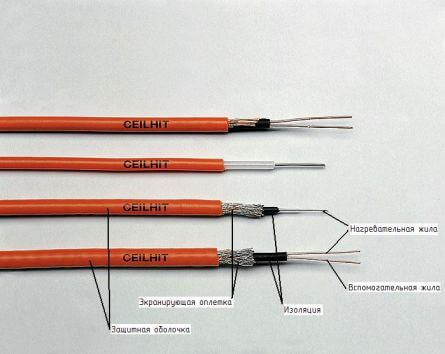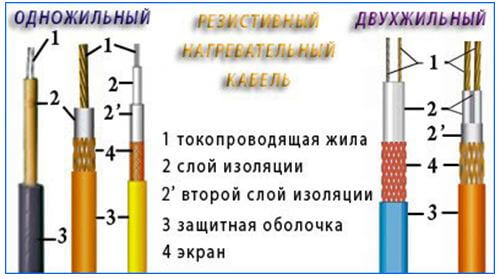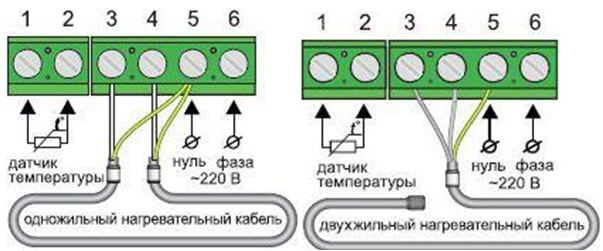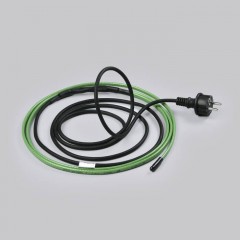How is a resistive heating cable arranged?
Design Features
How is the conductor arranged? The basis of its design includes steel cores (one or two), depending on this, the resistive heating cable is divided into two types: with one and with two cores. The conductive core is insulated with a special material. In some types, the construction includes two layers of insulation. A protective screen made of metal (shielding braid) is applied to the insulating material. Its purpose is protection against mechanical damage, as well as use as grounding. For full protection, an external protective shell is used.
Resistive heating cable with one core has one heating conductive core, which occupies the entire length of the structure. The use of such a device is considered the most optimal in terms of costs, since it is resistant to high temperatures of plastic. Power is supplied from both sides of the fixture. Such a scheme may form some boundaries in terms of installation, since there is a need to return the heating conductor to the point of its connection. It also becomes necessary to use additional power systems.
The two-core design includes two wires: heating and conductive. Electric current is supplied to one end of the wire, and a coupling is installed to the other end. When designing this design option is much more convenient to use.
Principle of operation
The principle of operation of the design describes Joule-Lenz law, which states that with a uniform electric current along the entire length of the circuit, heat will be generated in any area. The higher the resistance in this area, the stronger the heat. In other words, the principle of operation is similar to an electric heater: current flows through the conductor, which releases heat. It will be stronger if the resistance of the conductor and the strength of the electric current is greater.
Therefore, the resistive heating cable contains a heating element, which consists of alloys with an insignificant cross-section and high resistance. It is sold a certain length, each piece of the conductor has constant resistance and the ability to emit the same amount of heat.
The principle of operation of a single-core conductor is as follows: since the connection to electricity occurs from two ends, the resistive heating cable is looped so that the two ends of the product are in one place. Such a connection is shown in the diagram below (left):
The principle of operation of a two-wire resistive cable differs from the previous one.The use of two cores allows not to let the two ends of the product in one place. The right diagram shows the correct connection.
As a rule, this principle of operation makes it possible to use the device in the household and to heat pipes of small sizes. And in order for the work to work correctly, it is permissible to use pipes with a diameter of not more than 40 mm.
Advantages and disadvantages
The principle of the resistive cable involves its pros and cons. Product advantages are as follows:
- affordable cost;
- simple device;
- with proper installation, it lasts several decades;
- significant indicators of resistivity;
- with prolonged use, parameter stability is maintained.
The resistance heating conductor also has its drawbacks. These include:
- the inability to lengthen or shorten the device, since its length is fixed;
- in case of failure, it is necessary to completely change the heating cable, there is no option to replace a specific section;
- if the heating element is next to another similar one, or the wires are intertwined, this leads to their overheating, as well as to a violation of insulation and short circuit.
So we examined the device, the principle of operation, as well as the main pros and cons of a resistive heating cable. We hope the information provided was useful and understandable to you!
Surely you do not know:








